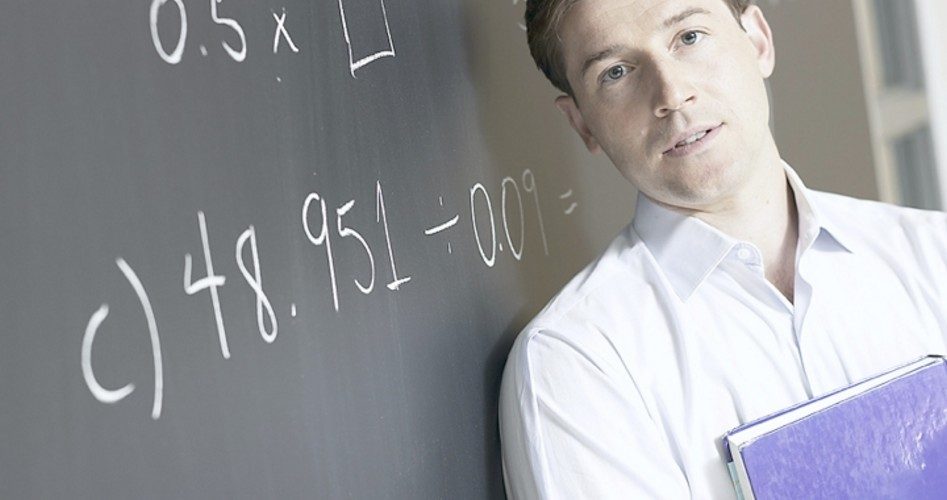
The Obama administration announced a new initiative Wednesday to recruit an elite group of master educators in a $1-billion effort to bolster U.S. educational attainment in the subjects of math, science, engineering, and technology. “If America is going to compete for the jobs and industries of tomorrow, we need to make sure our children are getting the best education possible,” President Obama said when introducing the effort. “Teachers matter, and great teachers deserve our support.”
The Science, Technology, Engineering, and Math (STEM) Master Teacher Corps, comprised of “some of the nation’s finest educators in STEM subjects,” is slated to launch with 50 teachers grounded in 50 different sites, with a four-year goal to reach 10,000 Master Teachers. The elite group is charged with a multi-year commitment to the corps, and in return for their service and expertise, they will receive an annual $20,000-stipend on top of their current salary.
Speaking at a campaign event in San Antonio, Texas, on Tuesday, Obama emphasized an urgency to boost education funding, while blasting Republican rival Mitt Romney for preferring tax cuts to the wealthy over quality education for America’s children. “I’m running to make sure that America has the best education system on earth, from pre-K all the way to post-graduate,” the president declared. “And that means hiring new teachers, especially in math and science.”
The White House expounded on the program, explaining that the underlying goal is to generate a breeding effect in which highly skilled educators share their expertise with other teachers, generating a more expansive educational quality for students across the nation:
Today, the Administration also announced that the President will immediately dedicate approximately $100 million of the existing Teacher Incentive Fund toward helping school districts implement high-quality plans to establish career ladders that identify, develop, and leverage highly effective STEM teachers. With an application deadline of July 27th, over 30 school districts across America have already signaled their interest in competing for funding to identify and compensate highly effective teachers who can model and mentor STEM instruction for their teaching peers, providing those teachers with additional compensation, recognition, and responsibilities in their schools.
According to Roberto Rodriguez, an assistant to the president in education policy, STEM teachers will be chosen among local education leaders and will spend at least four years in the role. “They’ll be an elite group of teachers leading their communities,” Rodriguez affirmed. “They’d lead professional development [courses], mentorship activities, and would be regularly contributing new lesson plans and strategies to transform and improve science and math teaching.”
Over the long term, the administration plans to propel the initiative with $1 billion included in the president’s 2013 budget request. However, both chambers of Congress struck down Obama’s budget earlier this year, posing a serious obstacle for his ability to get congressional approval for the program’s $1-billion price tag.
Education Secretary Arne Duncan expects, rather ambitiously, the plan will see bipartisan support in an effort to boost achievement in critical educational areas. “This initiative has nothing to do with politics,” he said. “It’s absolutely in our country’s best long-term economic interest to do a much better job in this area.”
But Duncan’s hope has already been blunted. Chairman of the House Education and the Workforce Committee John Kline (R-Minn.) highlighted 80 existing teacher-quality programs and said it would be imprudent to pour more money into programs that may be inefficient or duplicative. “Republicans share the president’s goal of getting better teachers in the classroom,” asserted Alexandra Sollberger, a spokeswoman for Kline. “However, we also value transparency and efficient use of taxpayer resources.”
“A 2011 Government Accountability Office (GAO) report identified 82 existing teacher quality programs,” Sollberger explained further. “Many of the programs overlap, and little effort has been made to determine whether the programs were actually effective.”
In effect, the Obama administration’s latest endeavor is, in a broader sense, an effort to pump more federal dollars into an education system that has seen explosive spending growth over the past few decades. And despite a progressive incline in education spending, student achievement has not only remained flat, in some areas it has declined.
In a January 2011 article, Neal McCluskey, associate director of the Cato Institute’s Center for Educational Freedom, reported on the federal government’s ever-expanding role in education and how its presence in the sector is only “stuffing donuts into an already obese system”:
Federal elementary and secondary education spending has risen mightily since the early 1970s, when Washington first started immersing itself in education. In 1970, according to the federal Digest of Education Statistics, Uncle Sam spent an inflation-adjusted $31.5 billion on public K-12 education. By 2009 that had ballooned to $82.9 billion.
On a per-pupil basis, in 1970 the feds spent $435 per student. By 2006 — the latest year with available data — it was $1,015, a 133 percent increase. And it’s not like state and local spending was dropping: Real, overall, per-pupil spending rose from $5,593 in 1970 to $12,463 in 2006, and today we beat almost every other industrialized nation in education funding.
“What do we have to show for this?” McCluskey said. First is an expansion in public-school employees, with pupil-to-staff ratios close to halving between 1969 and 2007. “Not coincidentally,” he added, “these same people politick powerfully for ever more spending and against reforms that will challenge their bloated monopoly. They also routinely defeat efforts to hold them accountable for results.”
And what has billions of dollars in lobbying delivered to the U.S. education system? McCluskey concludes:
This constant feeding of special interests is why we’ve gotten zilch in the outcome that really matters — learning. Since the early 1970s, scores on the National Assessment of Educational Progress — the “Nation’s Report Card” — have been utterly stagnant for 17-year-olds, our schools’ “final products.” In 1973 the average math score was 304 (out of 500). In 2008 it was just 306. In reading, the 1971 average was 285. In 2008 it was up a single point, hitting 286.
Too, the plan flies in the face of teacher claims that teachers are not the problem. For years teachers have been saying that unmotivated students and uninvolved parents are the problem — and there is truth to this: Asian kids in American schools typically do very well on international math tests, so the opportunity to learn is already available to most kids who want to learn. But it’s also true that almost anyone can teach good students, while it takes a very good teacher to motivate and teach poor students.
The problem with this plan, like so many other plans to fix education, is that the plan does nothing to get rid of poor administrators, who often emphasize unproductive school activities such as “group learning”; it does nothing to weed out unmotivated, poor teachers; and it does not allow school choice so that students may go to schools that have top-notch teachers and administrators, thereby putting pressure on all schools to get rid of dead weight. This plan, if initiated — like so many others — is destined to fail.



